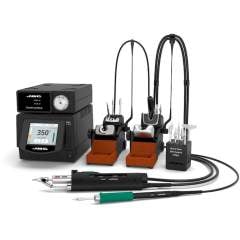Enhancing Industrial Efficiency with Bosch Rexroth Systems
Enhancing Industrial Efficiency with Bosch Rexroth Systems
Blog Article
Maximizing Output with Bosch Rexroth Equipment
Automation and motion control techniques are rewriting the principles of manufacturing, logistics, and actually power management. Behind the layer, groundbreaking products and effective innovations are operating efficiency, sustainability, and productivity to exceptional new heights. What makes these alternatives this type of warm soldering station (lötstation) subject, and why are they sugar development lists in commercial circles?

Surrounding the Future with Figures and Traits
Today, over 60 per cent of factories in sophisticated economies have implemented some amount of computerized action control. Contemporary sensors, electrical pushes, and digital controllers today underpin everything from robotics to conveyor belts. In accordance with a 2023 record, the world wide movement control market alone is projected to achieve $21 billion by 2027. That number presents a compounded annual growth rate (CAGR) of 6.5 percent, featuring precisely how keen industries are to follow high-precision automation.
But it's not merely traditional factories that are benefitting. Circulation centers across North America and Europe are reimagining workflows through wise conveyor programs and autonomous vehicles. These upgrades improve throughput by as much as 30 percent, reduce job prices, and lower problem prices across fast-paced offer chains.
Precision Matches Production
High-precision movement technology has become a must-have in sectors demanding precision and reliability. Semiconductor production is one example, where linear action books and multi-axis controllers offer precision tested in microns. Recent surveys show that makers leveraging these options see problem costs reduce by around 40 %, providing them with an important edge in a fiercely competitive field.
Alternative power and e-mobility are seeing related revolutions. Breeze and solar installations increasingly rely on real-time automation to enhance energy record and improve maintenance. That smart method helps cut downtime, with one study noting a 20 % decrease in maintenance costs at features which have followed automated get a handle on systems.
The Intelligent Factory Revolution
Automation is no further pretty much lowering individual error. It's about producing clever factories, wherever every part communicates seamlessly. Technologies presenting predictive analytics and IoT connection monitor machinery wellness and estimate preservation wants before breakdowns occur. Research shows that predictive maintenance can decrease unplanned downtime by as much as 50 per cent, translating into significant savings for place operators.
From automotive producers ramping up production pace to logistics firms seeking accurate handling and power savings, the figures inform a powerful history concerning this accelerating sector. In the event that you monitor current styles or form getting conclusions, knowledge wherever the industry is went is crucial.
What's Next for Automation and Activity Control?

The concentrate on sustainability, data-driven manufacturing, and smarter offer chains is only going to grow. Global demand for robotics and smart controllers continues to rise, specially in sectors where performance and flexibility suggest survival. Industries purchasing next-generation automation are setting themselves apart—with the figures to show it.
For companies mapping out their next shift, automation and activity get a handle on are becoming less of an option and more of a necessity. With earnings tested in higher output, decrease expenses, and new abilities, the case for use never been clearer.
Report this page